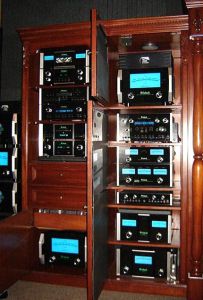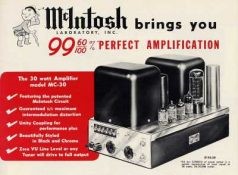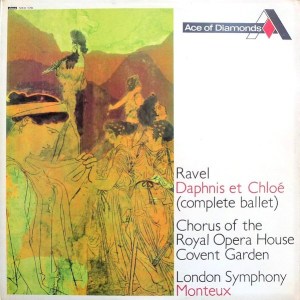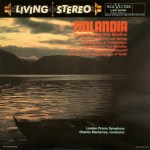More of the music of Tchaikovsky (1840-1893)
More Records on Decca and London

- This stunning 2 LP set of Ansermet and the Suisse Romande‘s definitive performance boasts excellent Double Plus (A++) grades or close to them on all FOUR sides
- It’s also fairly quiet at Mint Minus Minus, a grade that even our most well-cared-for vintage classical titles have trouble playing at
- Lovely string tone and texture, rich bass, a big hall, lovely transparency – the sound here is hard to fault (particularly on sides one and two)
- That gorgeous clarinet says it all, so rich and Tubey Magical (also particularly on sides one and two) – few copies have that sound the way this copy does
- The miking is tasteful, with much less spotlighting than most of the classical recordings we play
- If you are looking for a shootout winning copy, let us know – with music and sound like this, we hope to be able to do this shootout again soon
- If you love the music of Tchaikovsky — and what audiophile doesn’t? — this London from 1959 is surely a Must Own
This London UK import 2 LP set put every other recording of Swan Lake to shame. This is the one, folks, assuming you want a nearly complete performance of the work. (We have had some single LP highlight pressings on the site before. The Fistoulari on London can be especially good on the right pressing.)
I rank the performance here by Ansermet and the Suisse Romande second to none.
Ansermet is surely the man for this music, and the famously huge hall he recorded in just as surely contributes much to the wonderful sound here. (The Royal Gala Ballet is a good example. If you have the two grand to spend we highly recommend you find yourself a good one. And don’t waste your money on the Classic no matter what you may have read elsewhere.)
Production and Engineering
I believe, though have not been able to confirm, that James Walker was the producer and Roy Wallace the engineer for these sessions from 1958 in Geneva’s glorious-sounding Victoria Hall. It’s yet another remarkable disc from the Golden Age of Vacuum Tube Recording.
The gorgeous hall the Suisse Romande recorded in was possibly the best recording venue of its day, possibly of all time; more amazing sounding recordings were made there than any other hall we know of. There is a richness to the sound that exceeds all others, yet clarity and transparency are not sacrificed in the least. It’s as wide, deep, and three-dimensional as any, which is, of course, all to the good, but what makes the sound of these recordings so special is the weight and power of the brass and the timbral accuracy of the instruments in every section.
These are the kind of records that will make you want to take all your heavy vinyl classical pressings and put them in storage. None of them, I repeat not a single one of them, can ever begin to sound the way this record sounds.
Quality record production is a lost art, and it’s been lost for a very long time.

 Ansermet’s performance is clearly definitive to my ear as well. The gorgeous hall the Suisse Romande recorded in was possibly the best recording venue of its day, possibly of all time; more amazing sounding recordings were made there than any other hall we know of. There is a richness to the sound that exceeds all others, yet clarity and transparency are not sacrificed in the least. It’s as wide, deep and three-dimensional as any, which is of course all to the good, but what makes the sound of these recordings so special is the weight and power of the brass and the timbral accuracy of the instruments in every section.
Ansermet’s performance is clearly definitive to my ear as well. The gorgeous hall the Suisse Romande recorded in was possibly the best recording venue of its day, possibly of all time; more amazing sounding recordings were made there than any other hall we know of. There is a richness to the sound that exceeds all others, yet clarity and transparency are not sacrificed in the least. It’s as wide, deep and three-dimensional as any, which is of course all to the good, but what makes the sound of these recordings so special is the weight and power of the brass and the timbral accuracy of the instruments in every section.
 More of the Music of Felix Mendelssohn
More of the Music of Felix Mendelssohn A stereo that sounds like an old console, even one that has expensive new components — there are plenty of those sitting in audiophile’s listening rooms, bathing the listeners in an artificial blue light, perhaps as artificial as the quality of the sound — is perfect for all your bad sounding Golden Age recordings. The signal goes in one end of the electronics and not much of it comes out the other, or at least not much of the good stuff comes out the other.
A stereo that sounds like an old console, even one that has expensive new components — there are plenty of those sitting in audiophile’s listening rooms, bathing the listeners in an artificial blue light, perhaps as artificial as the quality of the sound — is perfect for all your bad sounding Golden Age recordings. The signal goes in one end of the electronics and not much of it comes out the other, or at least not much of the good stuff comes out the other. You can find this one in our
You can find this one in our 




 More of the music of Jean Sibelius (1865-1957)
More of the music of Jean Sibelius (1865-1957)

 The best sound on this album is on side two, where El Retablo de Maese Pedro can be found.
The best sound on this album is on side two, where El Retablo de Maese Pedro can be found.